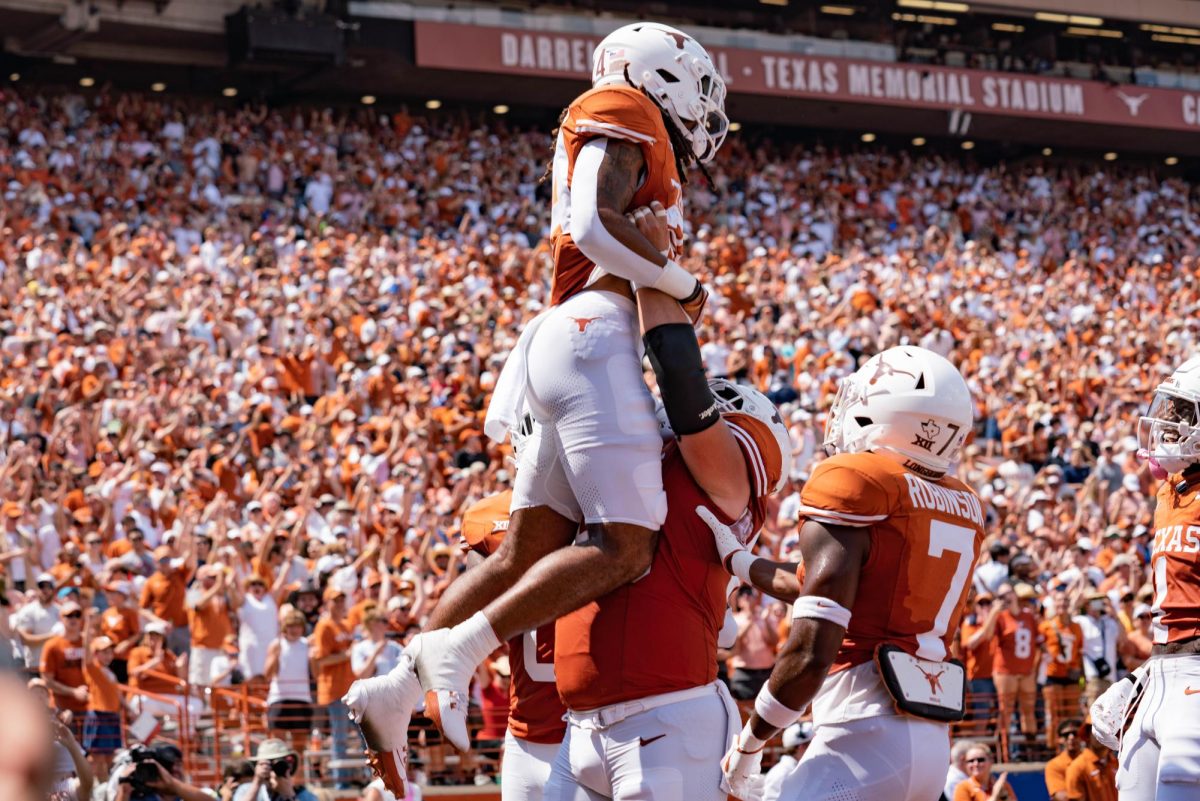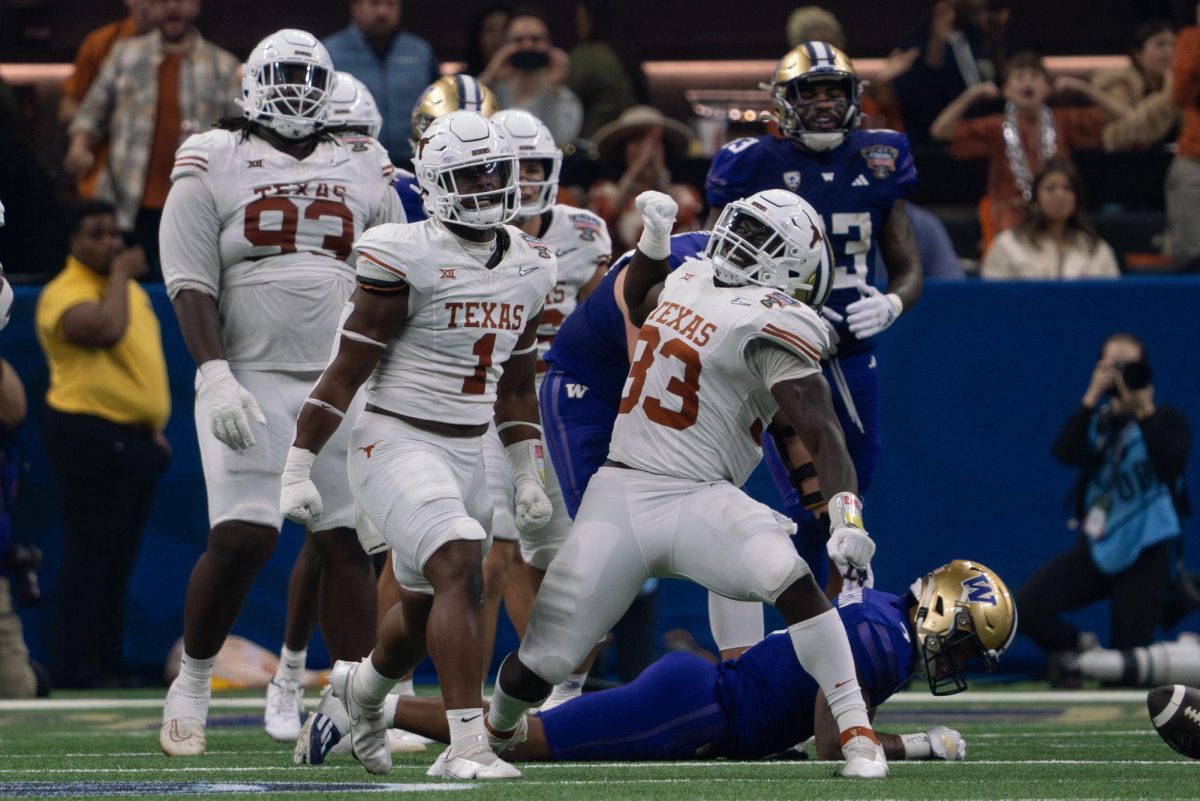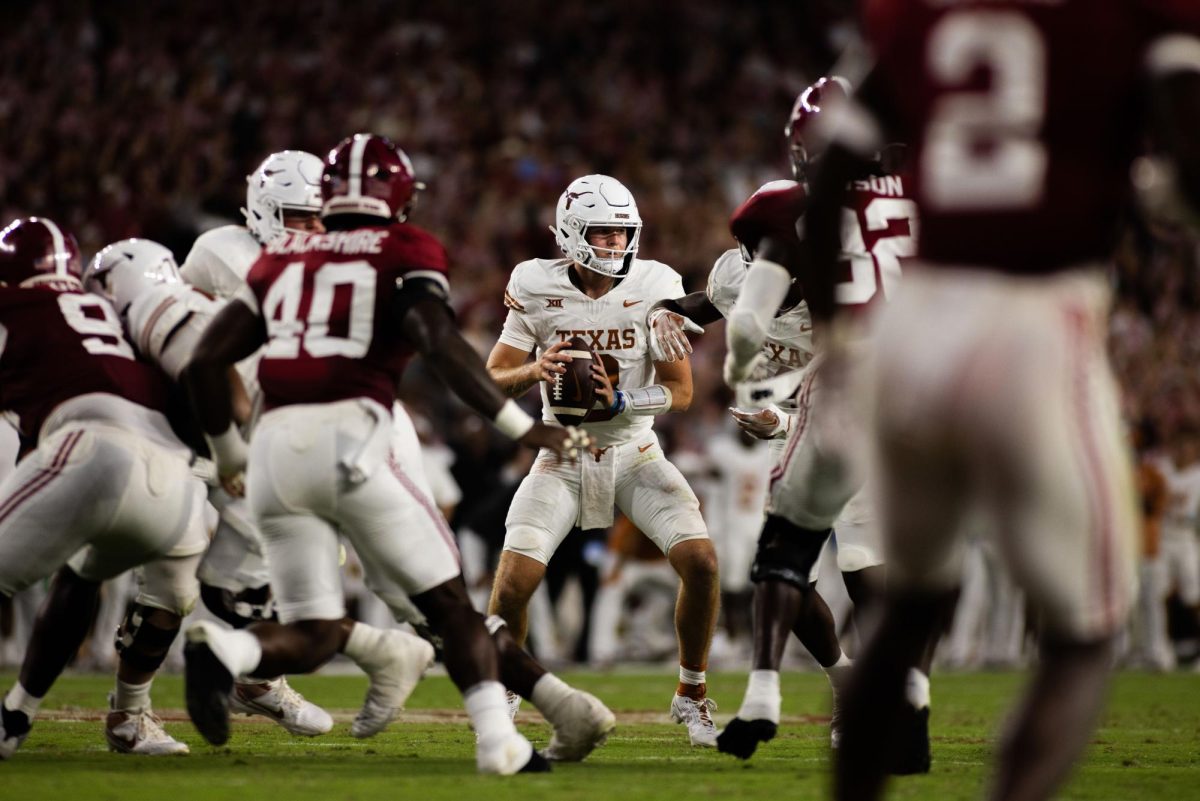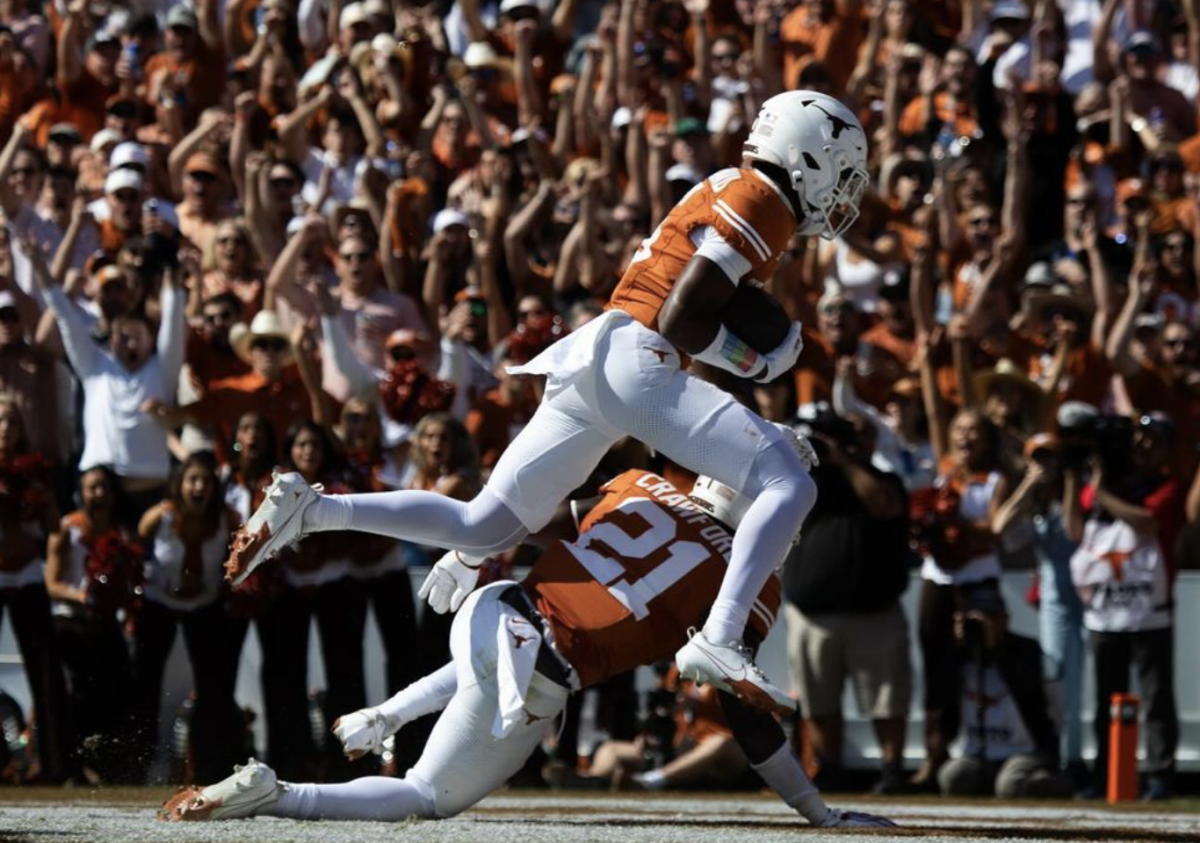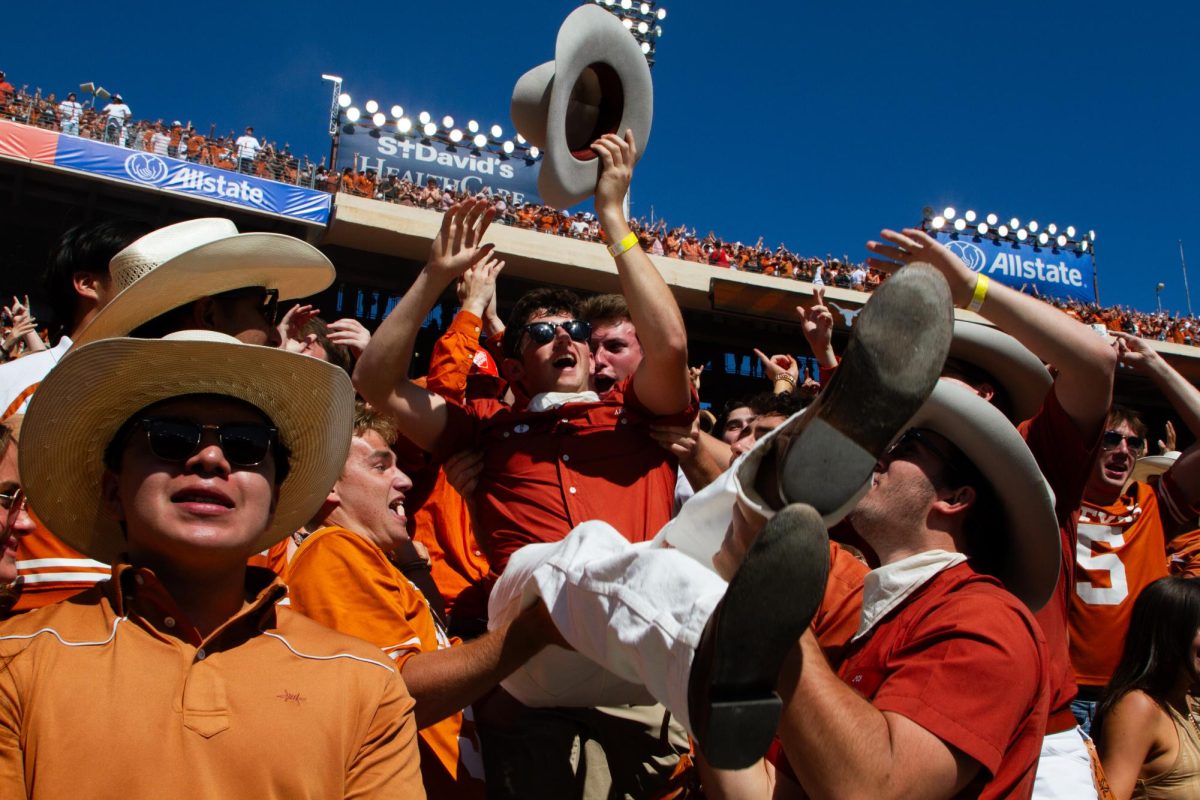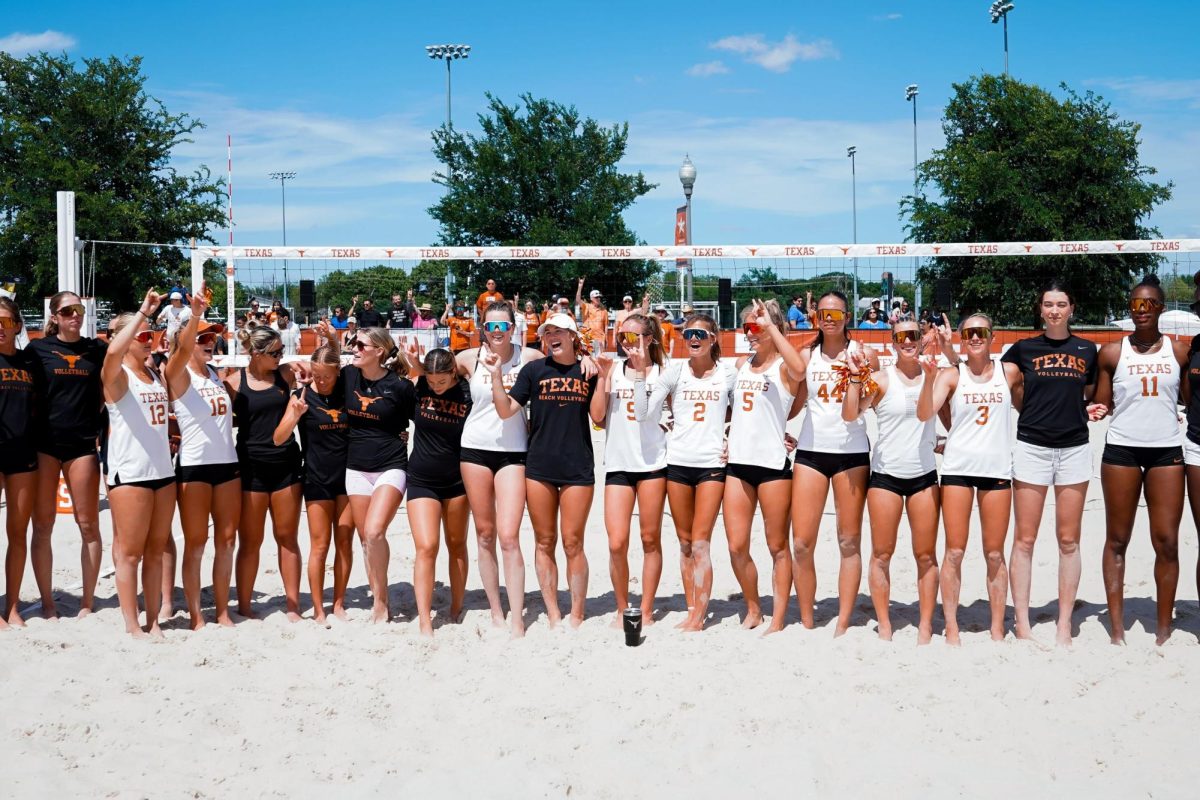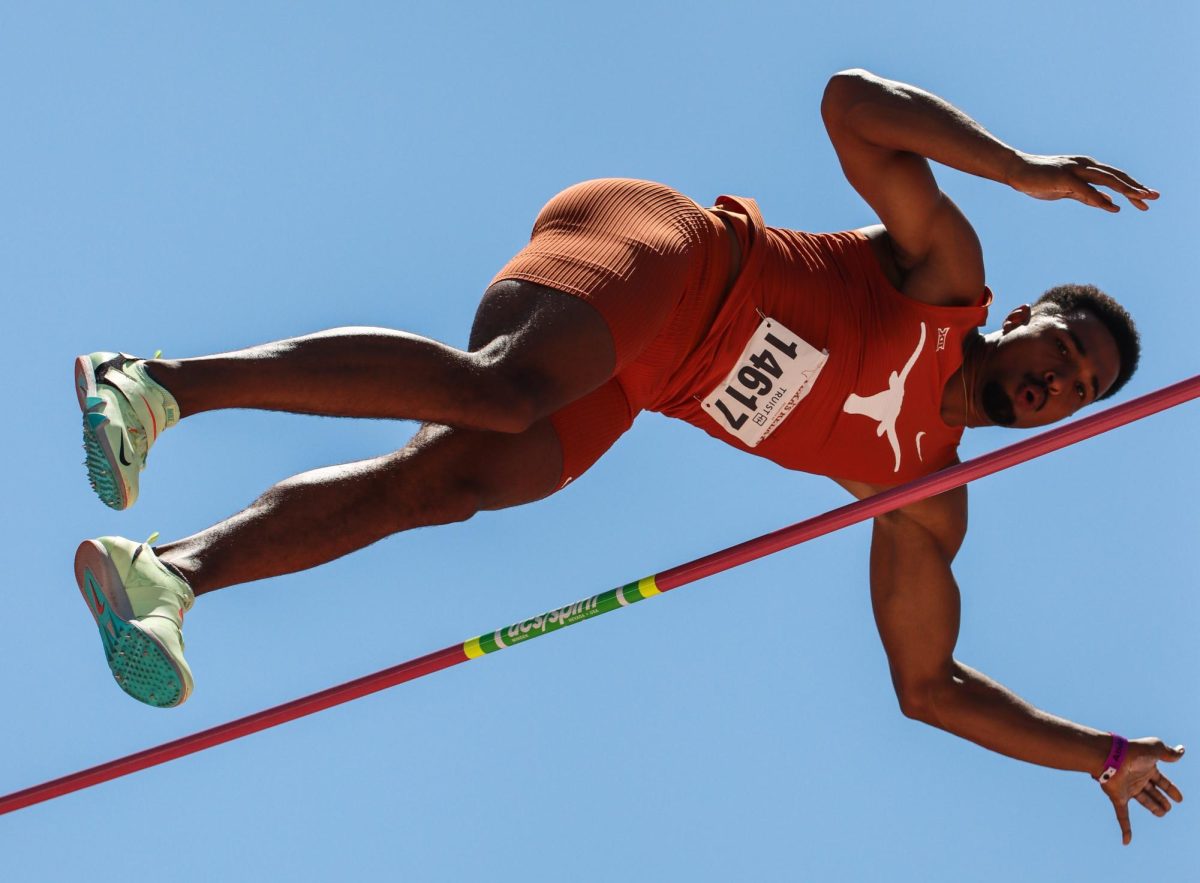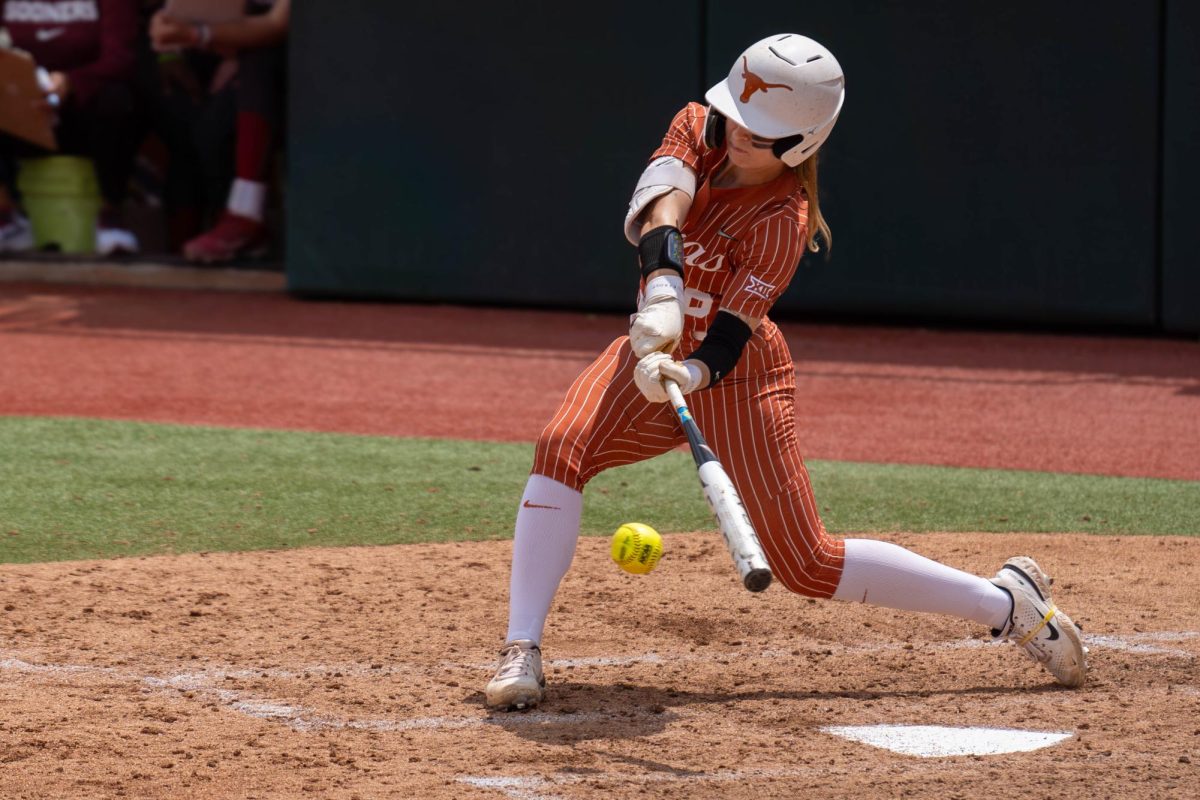The days of a football player getting knocked out, taking a whiff of smelling salts and running back on the field are over.
Tre’ Newton, who recently ended his football career because of a series of head injuries, can attest to that. So can Kyle Hix, Aaron Williams and a few other Longhorns who have missed games because of concussions.
Head injuries and violent collisions have the NFL’s attention as never before, and the NCAA is making moves to keep its athletes safer as well.
In the past, concussions might have been considered mere dings or minor injuries. But in the last five years or so, neurosurgeons and scientists have conducted research in order to understand how they occur and how to take care of them.
Sports Illustrated dedicated almost an entire issue to concussions a few weeks ago. In one of the articles, Peter King explained the link between football and psychological, physical and behavioral problems that afflict players down the road. He wrote how one scientist tested the brains of 14 former NFL players and diagnosed 13 of them with chronic traumatic encephalopathy — basically “incredible chaos in the brain,” which is seen in disorders such as dementia, Alzheimer’s and depression.
With this backdrop, football is changing how it deals with blows to the head. But how much?
Texas offensive coordinator Greg Davis had four concussions as a quarterback for McNeese State in the early 1970s, but he never missed a practice or a game.
“I remember I had one in a Saturday scrimmage during spring training and I practiced on Monday,” Davis said. “I don’t mean to imply that I’m some Rambo tough guy; times were just different.”
Davis said that offensive line coach Mac McWhorter, who was an offensive lineman at Georgia in the ’70s, joked that he had so many concussions that he carried ammonia capsules in his belt on his uniform.
But players can’t just pop pills anymore.
“It used to be if a kid got one, he could go back in the game,” said Texas head coach Mack Brown. “Now, if he has symptoms, he’s through. They take his helmet. They may take him inside. They don’t wait to see if it clears and we’ll put him back in. If the doctor says you’ve got symptoms, you’re through for the night.”
The most common symptoms are headaches, dizziness and nausea. Victims of a concussion can also have trouble concentrating and problems with eyesight. University of Georgia head athletic trainer Ron Courson told The Associated Press that oftentimes symptoms can be subtle, so it’s up to the team doctor or trainer to ask pointed questions and for patients to be honest with what’s going on with their bodies.
To help doctors assess an athlete’s recovery from a concussion, major college football programs frequently use what’s called baseline testing. All athletes who would be susceptible to concussions in their sports are given these neurological balance and psychological tests that measure memory, reaction and recognition before their season starts. Athletes who sustain a concussion are tested again, and their healthy tests and post-concussion tests are compared.
Courson told AP that he makes players tell him the months of the year backwards, for example.
Baseline testing is important, but the No. 1 thing doctors and trainers go by in deciding if a player is healthy are their symptoms.
A few weeks ago when Texas played Baylor, Williams got a concussion when he and safety Blake Gideon accidentally collided late in the fourth quarter. Coaches recalled that Williams seemed out of it and Texas head trainer Kenny Boyd deemed him ineligible to practice the following week or make the trip to Kansas State.
After his week off, Williams returned to practice and played against Oklahoma State and said he felt “100 percent and I didn’t see any symptoms come back.”
After being cleared to play, however, an athlete who has sustained a concussion is at greater risk for another one. That risk goes down over time, though.
“I think guys are bigger, faster and stronger now,” Brown said. “From my standpoint, collisions are bigger. I’m seeing hits out on the field now that are amazing hits. I’m talking about Saturday and Sunday. The equipment, nutrition, strength training and stretching are better and I think all those things lead toward bigger hits.”
In addition to the tests, the NCAA has made moves to protect its players during games. There’s the targeting penalty, which means players cannot initiate contact with the crown of their helmets. Then there’s the halo rule, which prevents players from tackling an opponent in the head or neck areas.
The torso and chest are fair game, but sometimes jerseys are slick and if a player’s helmet gets knocked in the least bit, that is considered helmet-to-helmet.
These rulings have made it difficult for coaches and players to determine the difference between a big hit and a personal foul.
“I don’t know what to tell the players,” defensive coordinator Will Muschamp said. “If you lead with your shoulder, they’re defenseless. If you lead with your head, it’s helmet-to-helmet. The officials have a hard judgment call, but it’s hard on a defensive coach. I’m very concerned with where it’s headed. We’ll all be playing flag football here in about 15 years.”
With these rules, coaches are worried that if players can’t aim for the upper body, they’ll start zoning in on the legs.
“We’re going to have some nasty knees now,” Brown said. “If Sergio [Kindle] had gone at [Texas Tech quarterback Taylor] Potts’ knees, he’d have broken his leg.”
Regardless of the cringe factor that’s setting in, players won’t hold back.
“I always go 100 miles per hour. I’ll worry about all that health stuff 10 years from now when I’m done playing,” Gideon said. “I’m making memories now. We all knew what we were signing up for when we started playing football.”



